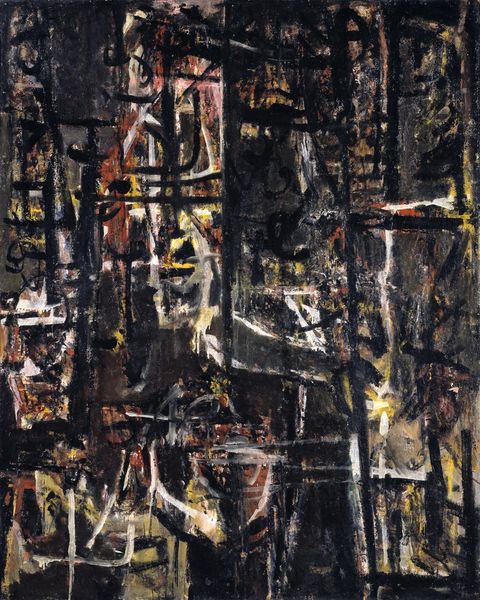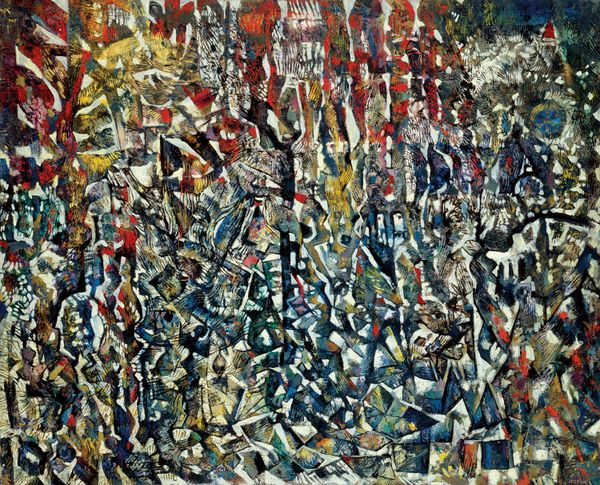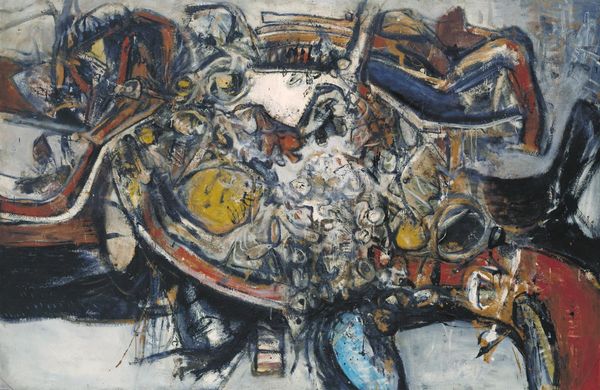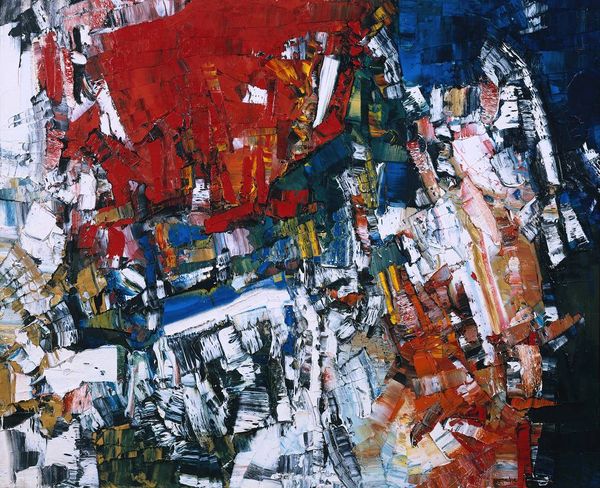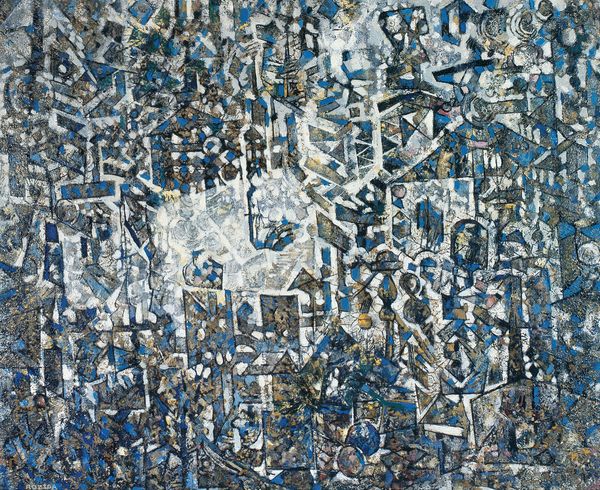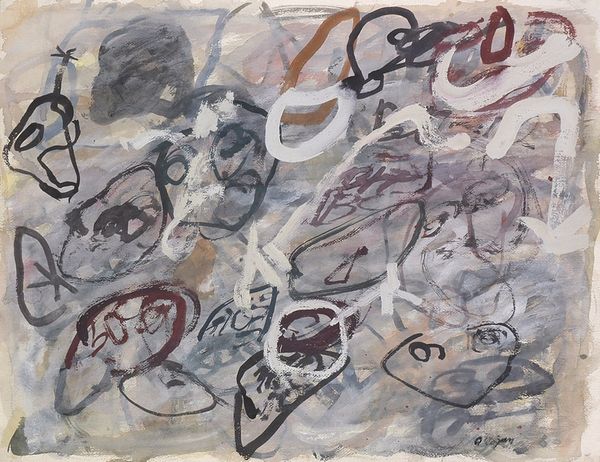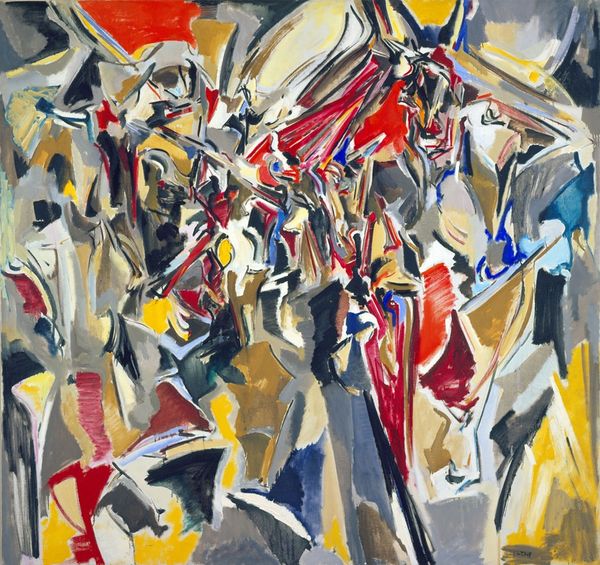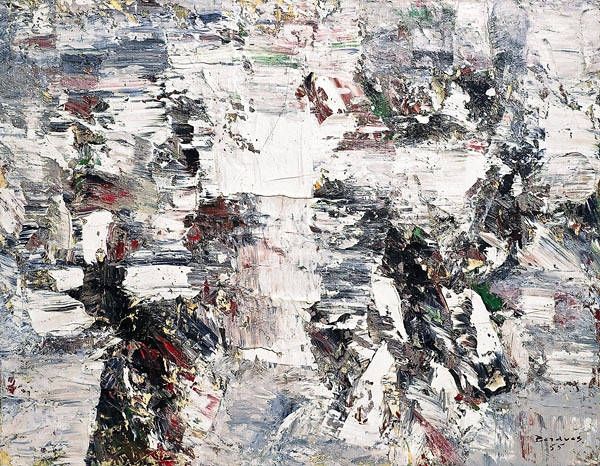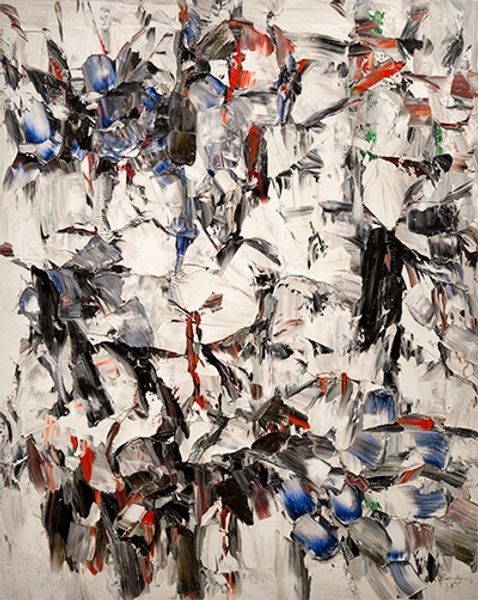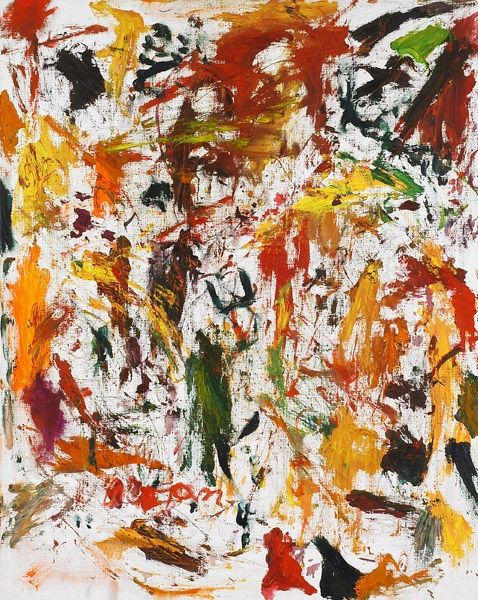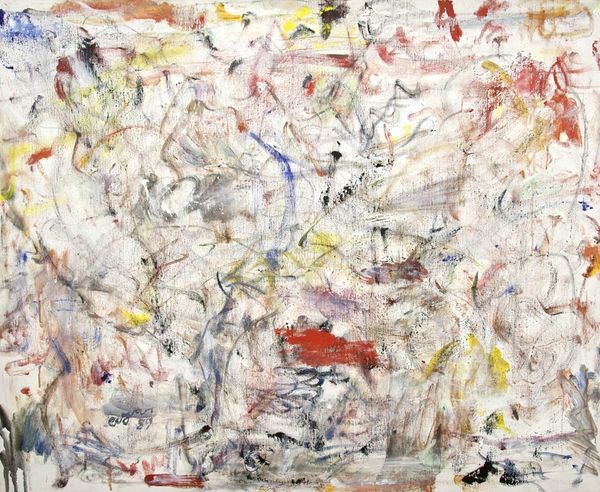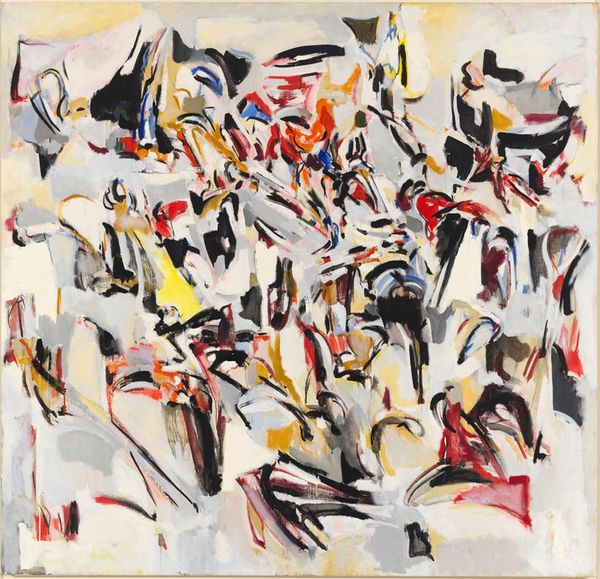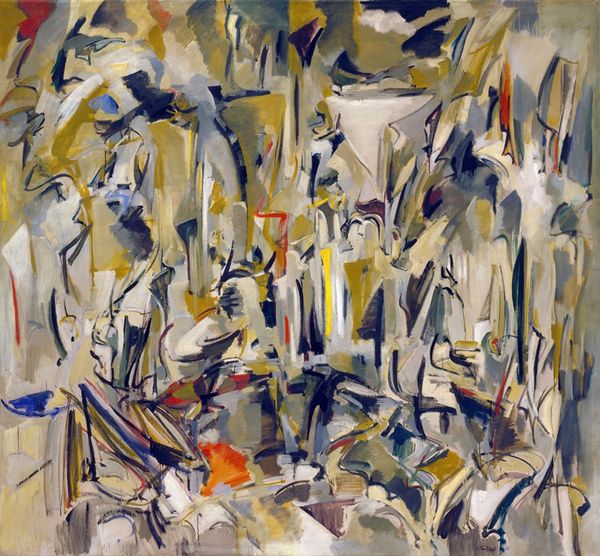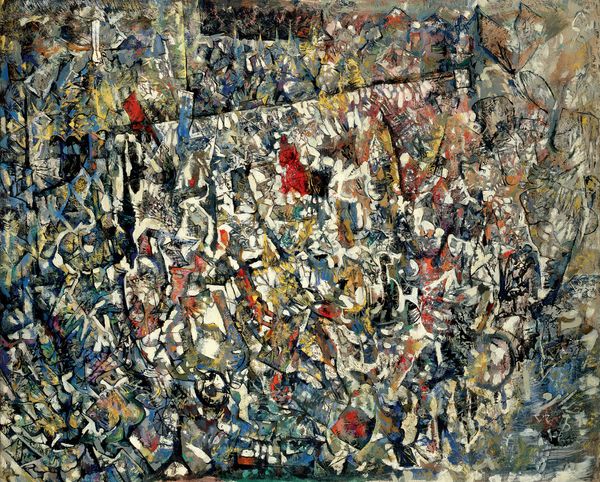
Dimensions: unconfirmed: 1524 x 1220 mm frame: 1540 x 1235 x 38 mm
Copyright: © The estate of Bryan Wynter | CC-BY-NC-ND 4.0 DEED, Photo: Tate
Editor: We're looking at Bryan Wynter's "Riverbed." It’s an abstract oil painting, and I'm struck by how the gray and black shapes seem both chaotic and meticulously placed. What symbols or deeper meanings do you see in this work? Curator: Notice the layering of forms, the way these gray shapes evoke the idea of flowing water but also of ancient, almost glyph-like symbols. Do you think the artist is suggesting a link between the natural world and our cultural memory? Editor: That's interesting. I hadn't considered that. Maybe the riverbed represents layers of history revealed over time. Curator: Precisely. The river, as a symbol, carries so much weight across cultures – of life, death, purification, the passage of time itself. Wynter seems to be tapping into that deep well of meaning. Editor: I’ll definitely look at water motifs differently from now on. Thanks! Curator: And I’ll be thinking about how artists use abstraction to explore our collective past.
Comments
Join the conversation
Join millions of artists and users on Artera today and experience the ultimate creative platform.
tate 8 months ago
⋮
Wynter made his paintings with hundreds of brushmarks intersecting and laid over one another. This approach related him to the art informel movement or tachisme then prevalent in France. These laid emphasis on the matter of paint itself and the gestural marks made in response to one another. Wynter, who lived isolated on the moors of Cornwall, was fascinated by nature. His painting technique deliberately echoed natural processes of flow and erosion. Here the lighter brushstrokes seem to flow around larger areas like water around rocks – hence the work’s title. Gallery label, November 2016
